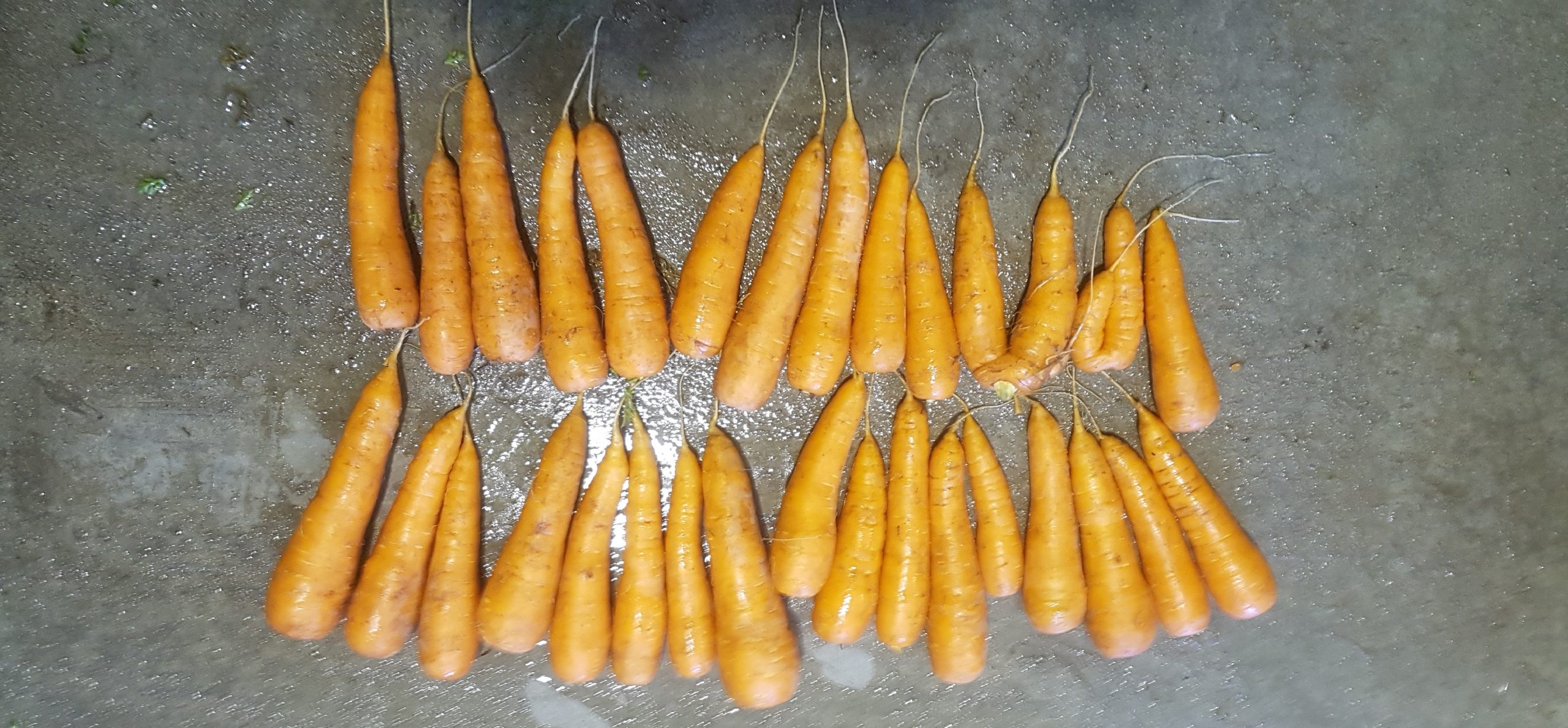
Harvesting consumer attitudes towards fresh vegetables
10 March 2020
Understanding the net benefits for fruit flies
10 March 2020In May 2017, researchers Dr Doris Blaesing and Dr Len Tesoriero discussed the Pythium species that cause cavity spot and forking in carrots. This was one of several soilborne diseases under the microscope in a vegetable levy-funded project that aimed to assist growers in the management of these diseases.
Two main Pythium species have been identified to cause forking and cavity spot of carrots in Australia. In most cases, P. sulcatum causes the symptoms while P. violae has only been identified in South Australia to date. Further research is happening to its spread.
P. sulcatum, the main pathogen causing cavity spot of carrots in Australia, mostly affects the carrot family of plants. It also causes severe root rot diseases of parsley and coriander. P. violae is the main cause of cavity spot of carrots in most other countries and has a much wider host range. The primary sources of Pythium inoculum are dormant resting spores formed during colonisation of plant tissue, and can survive in the soil for several years.
Cavity spot caused by P. sulcatum is most severe in summer and autumn harvested crops. In wet soils, this species also produces mobile spores (zoospores), which are attracted to roots where they encyst and cause infection. Although zoospores only survive for a day or so, they can significantly increase the population concentration of this pathogen, which can lead to multiple infection sites on any one carrot.
P. violae does not produce mobile spores; it produces spherical swellings that spread with irrigation water. Cavity spot caused by this species is most severe in winter harvested crops.
Cavity spot development and management
The main factors affecting cavity spot development are soil temperature, soil pH and soil moisture. While temperatures can be controlled to a degree via site selection and scheduling planting times, other factors can be controlled by crop management approaches.
Temperature: The prime growth temperatures for P. sulcatum are minimum 2-3°C, optimum 20-28°C and maximum 36-37°C. Temperatures of 30°C and above are lethal for P. violae.
Soil moisture: High soil moisture leads to greater incidence and higher severity of Pythium infections. However, at the critical crop growth stages, the threshold soil moisture and the period required at that threshold to cause infection with both species is still unknown for Australian production regions.
Variety selection: This can greatly help in minimising the occurrence of cavity spot, as some varieties are more susceptible than others. It is worth asking seed suppliers.
Crop protection options: Metalaxyl-M can reduce the incidence and severity of cavity spot disease when applied at or shortly after seeding. However, if it is used too frequently it can lose its effectiveness because of an increase in its rate of breakdown in soil. While metham sodium is used commercially for carrot production to manage the disease, enhanced breakdown with repeated use has been implicated and it has failed to control cavity spot in trials in Western Australia.
Soil pH: In Western Australia, it has been shown that liming soil to increase pH reduces the incidence and severity of cavity spot. The recommended pH range is pH 6.5-7.5 with a target pH of 7.2 or higher (measured in calcium chloride).
Nutrition: UK research found that increasing the level of exchangeable calcium above 8 meq/100g soil decreased the incidence of cavity spot. High inputs of available calcium pre-planting (e.g. 15 t/ha of a product called Limex) also decreased cavity spot incidence. In both cases, P. violae was the target organism.
Rotation: Research has shown that rotation with broccoli, lettuce or onions has produced promising results where the primary pathogen was P. sulcatum. As P. violae can attack broccoli and may exacerbate cavity spot, rotation with onions, corn, potatoes or beans may be more beneficial.
Cover crops/biofumigation: Reports on the benefits of cover crops and biofumigants vary. The conclusion is that the effect of cover crops on P. sulcatum and P. violae is currently not well enough understood to make general or regional recommendations.
Other: Cultural practices that reduce the impact of root diseases include crop hygiene, selection of planting date and crop density, tillage approaches that ensure good soil structure and drainage, crop residue management to foster their breakdown, and timely harvest. Integrated crop protection (ICP) strategies to reduce the likelihood of infection using management practices listed above are recommended.
The bottom line
While some general rules apply, especially the need for managing soil moisture, pH, soil calcium and crop maturity, carrot producers should find their own optimum combination of additional management strategies that fit their production systems and growing conditions.
A substantial research effort has been made to predict Pythium inoculum levels and disease risks in vegetable crops, including carrots. Most research had a focus on identifying threshold levels of inoculum rather than identifying conditions (e.g. temperature, soil moisture, soil nutrient levels, levels of other diseases or pests) that cause infections to occur in different commercial production systems.
Researchers at the South Australian Research and Development Institute (SARDI) are currently developing soil DNA tests for detecting soil populations of P. sulcatum and P. violae (Improving soilborne disease diagnostic capacity for the Australian vegetable industry; VG15009).
Once these have been developed and tested, the next step is to understand the relationship between soil inoculum levels and production factors, both environmental and cultural practices.
Find out more
The final report and further resources produced as a result of A multifaceted approach to soilborne disease management (VG15010) can be found on the InfoVeg database.
A multifaceted approach to soilborne disease management was a strategic levy investment under the Hort Innovation Vegetable Fund.
This project was funded by Hort Innovation using the vegetable research and development levy and contributions from the Australian Government.
Project Number: VG15010

